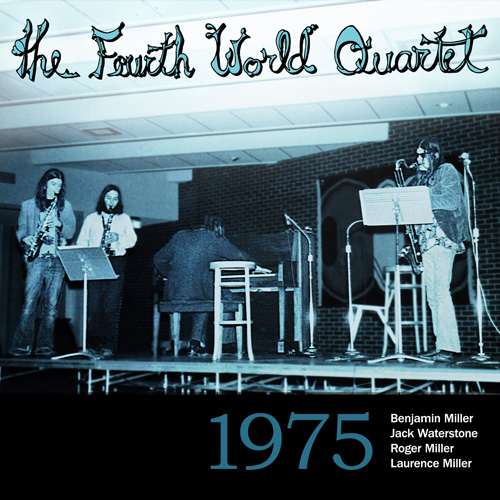Benjamin Miller: alto saxophone, electric guitar, composer
Laurence Miller: bass clarinet, composer
Roger C. Miller: piano, percussion, cornet, composer
Jack Waterstone: alto saxophone, composer
"The resulting series of ...
sessions, collected here for the first time, reveal how the amalgam of
volatile styles the brothers ingested during their varous sonic
encounters fused together and caught fire...Although The Fourth World
Quartet was a short-lived project, this remarkable discovery reveals a
group who were knocking over some serious creative barriers." – Edwin Pouncey / Jazzwise
"Amazing
early work from the Fourth World Quartet – an obscure new music
ensemble from early 70s Michigan – but one whose members would go on to
form Mission Of Burma and Destroy All Monsters! Here, the sound is
completely different than those later groups – a mix of compositional
structure and free improvisation – served up by Roger Miller on piano,
Benjamin Miller on guitar and alto, Laurence Miller on bass clarinet,
and Jack Waterston on alto – a reed-heavy lineup who make some
wonderful soundshapes next to Roger's more dynamic piano!" – Dusty Groove
|
The Fourth World Quartet formed in February 1975 at Thomas Jefferson College. Roger Miller, the original pianist, left the group in April. By the end of that month, Denman Maroney, who taught composition for the remaining member's – Benjamin and Laurence Miller and Jack Waterstone – suggested joining the band as their new pianist. The members were thrilled. Denman Maroney: piano, conductor on #1 and #8, composer |
 1975 RUNE 481 |
The brothers Miller
grew up in Ann Arbor, Michigan. They came of age during the Summer of
Love when revolution and the White Panthers were livening up their
hometown. They formed their first band together in 1967, covering 13th
Floor Elevators and Mothers of Invention. Two years later they were
engaged in freeform rock improvisations and started their first
all-original rock band Sproton Layer. Their summer 1970
recording, "With Magnetic Fields Disrupted", was released in 2012 on
the German label World in Sound. During this time, they would see the
MC5 at a free concert in the afternoon, then head over to the
University of Michigan New Music department to hear Stockhausen at
night. John Sinclair's Ann Arbor Blues and Jazz Festival a couple years
later definitely had an impact on their world-view. |
PRESS RELEASES
1975 press release
